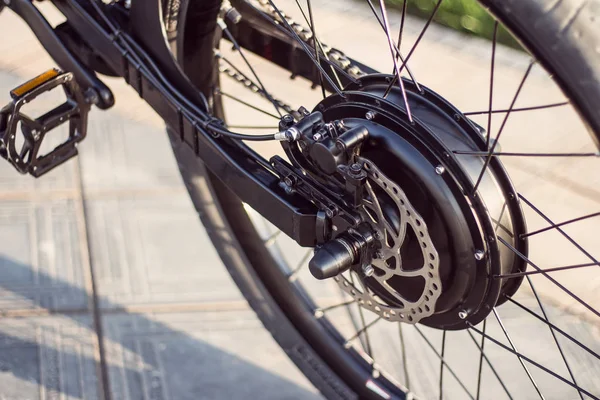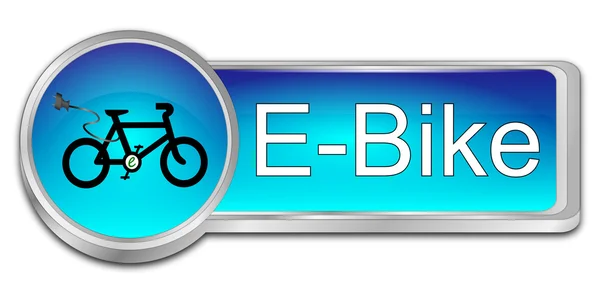There has been a lot of talk about electric bikes recently, with many people claiming that they’re the future of transportation. On the other hand, some say that electric bikes are nothing more than a fad and will eventually die out.
So what’s the truth? Are electric bikes the future of transportation? Or are they just a fad that will eventually fade away compared to ordinary bikes? As many would say, the truth lies somewhere in the middle.
Of course, there are both health benefits and disadvantages to using electric bikes. Have you been surfing the web to see what people say about e-Bikes? If yes, then look no further as this is the right platform for you.
In this article, we’ll discuss the cost of maintaining regular bikes and electric bicycle parts so you can decide whether an e-Bike is suitable for you. We’ll also guide you through the differences between electric bikes and regular bikes. If you’re ready to explore and maybe start pedaling, let’s go!

What Is an E-bike, and How Does It Work?
An electric bike, or “e-Bike,” is a bicycle with an integrated electric motor that can be used for propulsion. e-Bikes are becoming increasingly popular in many countries as an alternative to regular bikes as they reduce carbon emissions and promote sustainable transportation.
How Do e-Bikes Work?
An e-Bike typically has a battery pack mounted on the frame, which powers an electric motor located in the front or rear wheel hub. When the rider pedals, the motor assists with propulsion, providing an extra power boost to help with uphill climbs or long distances.

e–Bikes are classified into three different categories:
1. Pedal-assist
2. Throttle
3. Twist and go
Pedal-assist e-Bikes
These are the most common type, and as the name suggests, they provide power assistance when you pedal but could also come with additional rules and regulations depending on your municipality. The amount of assistance is typically adjustable, so you can control how much you get from the motor.
Throttle e-bikes
These are less common, and they work by providing power to the motor without any pedaling required. This can be useful if you need a quick burst of speed or starting from a standstill on an uphill climb.
Twist-and-go e-bikes
These are the simplest to use, and they work just like a regular bicycle once you get cycling/going. To start, twist the throttle grip, and the bike will start moving. No pedaling required!
Electric Bikes vs. Regular Bikes: The Raw Facts
As mentioned earlier, there’s been a lot of debate about electric bikes and whether or not they’re “better” than regular bikes. Here are five facts that may help you decide:

Electric Bikes Are Much More Expensive
When buying electric bicycles, you’re looking at a minimum of $1,000. That’s a pretty significant investment that not everyone is willing or able to make. Additionally, the price of electric bikes can vary significantly, with some models and their mechanical elements costing as much as $5,000 or more. In contrast, a good quality regular bike can cost well under $1,000.
Electric Bikes Are Heavier
Electric bikes typically weigh around 33-40 lbs (15-20 kg), about twice as much as a regular bike. This can make them more challenging to transport and maneuver, especially if you’re not used to them.
Electric Bikes Have a Shorter-Range
The average electric bike ranges around 20-40 miles, although this can vary depending on the model and terrain. If you’re planning on using your electric bike for long-distance rides or cycling, you need to ensure you have the means to recharge your battery.
Electric Bikes Require More Maintenance
Because electric bikes have more moving parts and display screens, they require more maintenance than ordinary bikes. This can include regular tune-ups, battery replacements, annual repairs, and other routine maintenance to get the best riding experience.
Electric Bikes Are Better for the Environment
Since electric bikes don’t rely on gasoline, they produce no emissions. This makes them a much more environmentally-friendly option than motorcycles or cars. In fact, they’re often touted as one of the best ways to reduce your carbon footprint.
Pros and Cons of Using Electric Bike Motors
Most people use electric bike motors because they’re more environmentally friendly than gas-powered motors. However, before making the switch, you should be aware of some drawbacks to using eBikes. Let’s dive into the pros and cons of using electric bike motors.
Pros
- Reduced Pollution
- Low-maintenance Cost
- Saves Money on Fuel
- Increased Efficiency
- Easy to Use
Cons
- They have a limited range, meaning you won’t be able to ride your bike (the same way for long) without having to recharge the battery
- Most electric bikes can be pretty expensive, especially if you’re buying a high-quality bike
- They’re usually quite heavy and bulky because of their electric components
- Unlike a motorcycle, an electrical drive system or e-Bike requires electricity to operate
- Electric bikes are more likely to be stolen
Maintenance and Repair Costs of Motorized Vehicles and eBikes
While it’s true that both types of bikes require some basic upkeep, there are some differences between them when it comes to maintenance and repairs.
In this section, we’ll take a closer look at the maintenance and repair costs of an e-Bike and regular bike so you can decide which type of bike is right for you.
Electric Bike Battery
When it comes to eBikes, the most significant maintenance cost is the battery. Depending on the type of battery your bike has, you can expect to pay anywhere from $100 to $600 for a new one. Besides the battery, electric bikes don’t have many different moving parts, so there aren’t any additional significant maintenance costs.
Regular Bikes
Regular bikes require more frequent maintenance than electric bikes, but the costs are usually lower. For example, you’ll need to tune up your road bike every few months, costing anywhere from $50 to $100.
You’ll also need to replace your tires and pedal assists more often than you would with an electric bike, which can add up to a few hundred dollars. However, regular bikes don’t have any significant mechanical components that need to be regularly replaced like eBikes, so overall maintenance costs are usually lower.
Differences Between a Regular Bike and Electric Bike
- eBikes have a motor and pedal assistance while a regular bike doesn’t. This motor can give you a boost when you’re pedaling or on steep hills, making it easier to ride eBikes up hills or over long distances.
- The battery on an electric bike will need to be recharged after a certain number of miles, while you can ride a regular cycle as long as you have pedal power.
- eBikes typically cost more than the regular bike because of the motor and battery
- You’ll need to wear a helmet when you ride an electric bike, just like you would with a regular bike on longer distances.
- Some states have laws regulating speed limits for eBikes. For example, you might not be able to ride them on trails or in parks.
Who Benefits From Using E-Bikes?
Environmentally-conscious Commuters
Many people concerned about the environment choose to ride an e-Bike instead of taking public transport, driving, or riding a motorcycle. eBikes produce zero emissions, so they’re much better for the environment than cars or buses. Commuting by eBikes is also often quicker than public transport, as you can avoid traffic congestion.
The Senior Citizen
Many older people have fond memories of riding their bikes when they were younger. Unfortunately, riding a bike can be a challenge for older people, especially those who aren’t as mobile as they once were. eBikes can provide the incentive they need to get cycling again. They can be particularly beneficial to people suffering from arthritis or recovering from injury.

Cycle Tourists
Another group of people using eBikes instead of regular bikes is cycle tourists because you can cover much more mileage in a day and get the most out of locations that might not be car-friendly or are far from public transport. Also, eBikes make cycling easier on steep hills and rough terrain possible without getting tired, meaning you can pedal and explore more places with less effort.
Students and Staff at Universities
Many universities are now encouraging students and staff to use bikes. This is because cycling is a sustainable and environmentally-friendly form of transport. eBikes are also much cheaper to buy and maintain than motorcycles and cars.
Delivery Riders
e-Bikes can be an economical advantage for small business owners and delivery drivers because they’re quick and ideal for short distances. Fuel costs can add up when using cars or motorcycles, not to mention that neither are environmentally friendly. Motorcycles and scooters can also be noisy, particularly at night in quiet neighborhoods. Nor is it necessary to have a license, pay tax, or insurance to ride an e-bike.
Conclusion
eBikes offer many advantages over regular bikes. They’re also a more environmentally-friendly and economical method of transportation and are a great way to get around and get some exercise.
